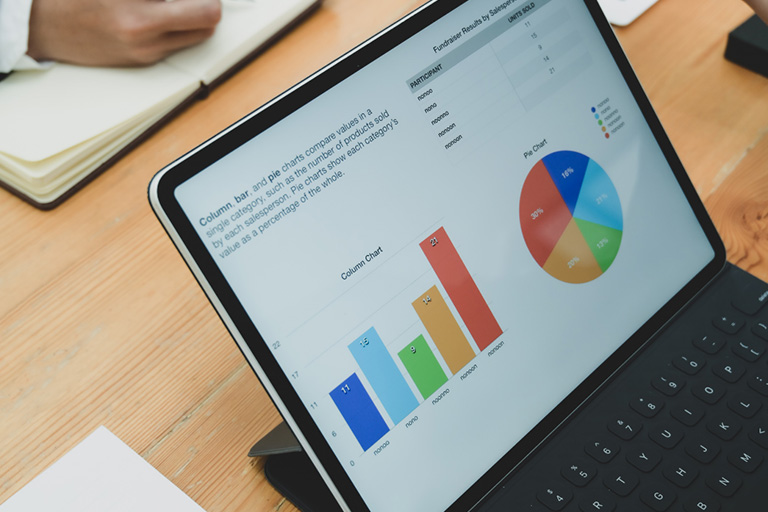Calculating Your Break-Even Point

Clinton Savings Bank is not a financial advisor. Please consult with a licensed professional who can provide advice tailored to your individual circumstances.
While we hope you find this content useful, it is only intended to serve as a starting point. Nothing in this article, nor in any associated resources, should be construed as financial or legal advice. Furthermore, while we have made good faith efforts to ensure that the information presented was correct as of the date the content was prepared. CSB disclaims any liability arising from the use or misuse of these materials and, by visiting this site, you agree to release CSB from any such liability. Do not rely upon the information provided in this content when making decisions regarding financial or legal matters without first consulting with a qualified, licensed professional.
Before you start a business it’s important to work out if your idea will be worth the financial, personal and time risk. If you’re confident there’s a genuine demand for your potential product or service (and at the price you want), the next step is to work out how much you need to sell each month to make a profit (your ‘break-even’).
There are two costs you need to recover.
1. Fixed Costs
You’ll probably have certain business overhead costs that you must pay each month to keep your operation running. They are ‘fixed’ each month regardless of sales.
These can include:
- Rent or mortgage payments
- Utilities (power, internet, phone etc.)
- Insurance, professional fees
- Committed expenses such as subscriptions, marketing
- Full time staff salaries
Anything that you have to pay even if sales were $0.
2. Variable Costs
Second are the expenses that are linked to a sale. If you’re a retailer every time you sell a product, you’ll need to replace it. Manufacturers will have raw materials or components, other businesses may have freight, commissions and possibly extra labor.
If you know your gross profit on each product, or an overall gross profit percentage, it’s much easier to calculate breakeven.
How a Manufacturing Business May Break Even
Here’s an example for a business making a single product to give you the idea of how break-even works. First, work out the gross profit on each product. This is the difference between the selling price of the product and its variable production costs.
For example, assuming your fixed costs per year are $300,000:
- Cost to create the product (materials, labor etc.) $100
- Selling price $250
- Gross profit is therefore $150
The break-even is fixed costs ($300,000) divided by gross profit ($150) which equals 2,000 products a year (about 40 a week).
If your business has multiple products and services, then it’s often too complicated to calculate one product at a time. In this case, work out your overall gross profit percentage and divide this into fixed costs.
In the above example if your gross profit across everything was 60%, then you divide this into $300,000 (which gives $500,000 worth of sales). As you’re selling the product for $250 each, that’s still 2,000 products a year.
How a Service Business Breaks Even
In a service business you’re usually selling your time and are unlikely to have variable costs of raw materials or products to buy. In this case it’s even easier:
- If fixed costs are $200,000/year
- Divide your hourly rate (say $125/hour) into this number
- This gives 1,600 hours a year to break-even (about 32 per week)
Try your own figures to see what hourly rate you come up with and decide if the rate is both competitive and feasible. Will you be able to meet that goal of 32 billable hours each week?
Use a Cash Flow Forecast to Check Your Figures
Complete a cash flow forecast with your break-even sales figures to triple check your numbers. It will help ensure you’ve covered all possible costs, plus considers when you get paid from customers and when you must pay suppliers. By entering figures that are as accurate as possible, you’ll be able to:
- Compare the money you’re expecting to receive every month with the costs and expenses you’re expecting to incur and make adjustments
- Address any cash shortage issues. If you know you’ll run out of cash in three months, it’s easier to come up with a plan to reduce the chance this happens by taking action – such as sell more, reduce costs, borrow money from the bank, set up a line of credit, or inject more of your own money into the business
- Play with different cash flow scenarios. Because there are many unknowns in business, you can modify your cash flow forecast into three versions: worst case scenario, best case scenario, and realistic scenario.

Next Steps
Once you’ve worked out your break-even (in either things to sell or sales to reach), work out what you can do to lower the break-even level. For example, all of the following will reduce your break-even point:
- Increasing your price or charge-out rate to improve your margin
- Reducing fixed costs and expenses
- Finding cheaper raw materials or components
- Selling higher margin products in your product mix
Calculating your break-even will help you determine the feasibility of the business, especially identifying early your capacity. If you end up having to charge out 50+ hours a week, or sell more products there is demand or you can physically produce, then it’s back to the drawing board.

